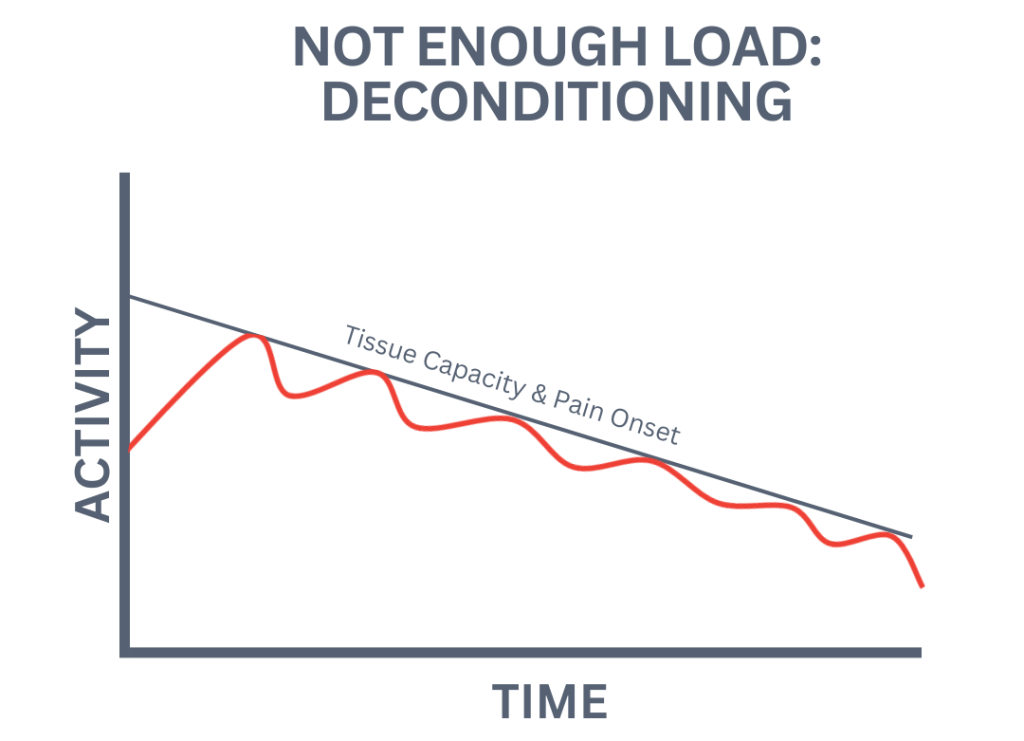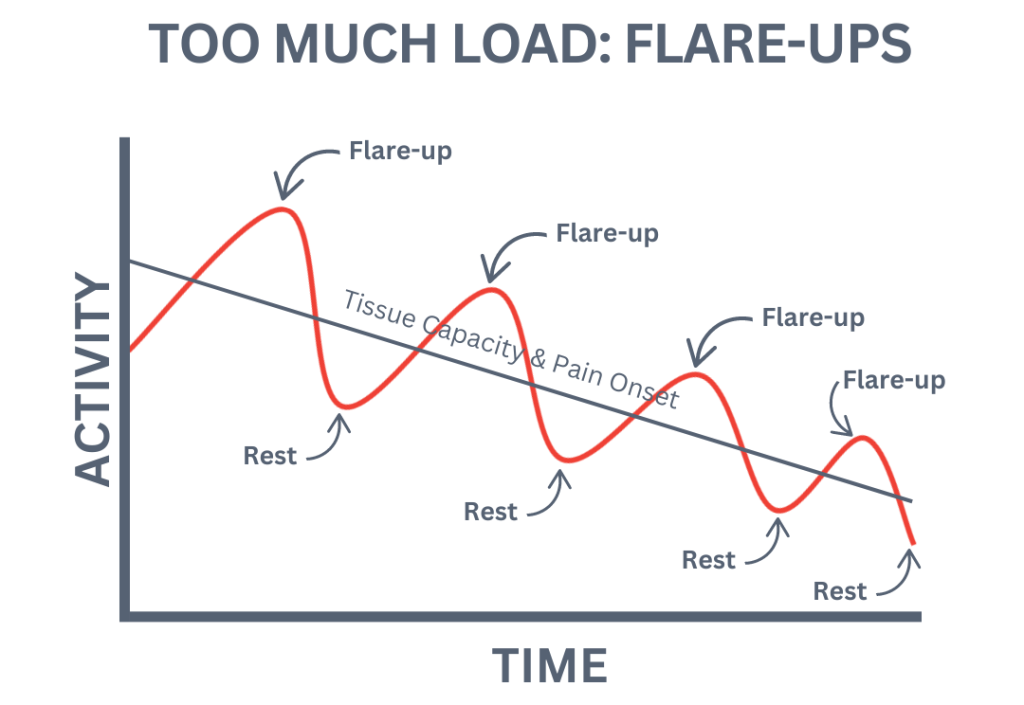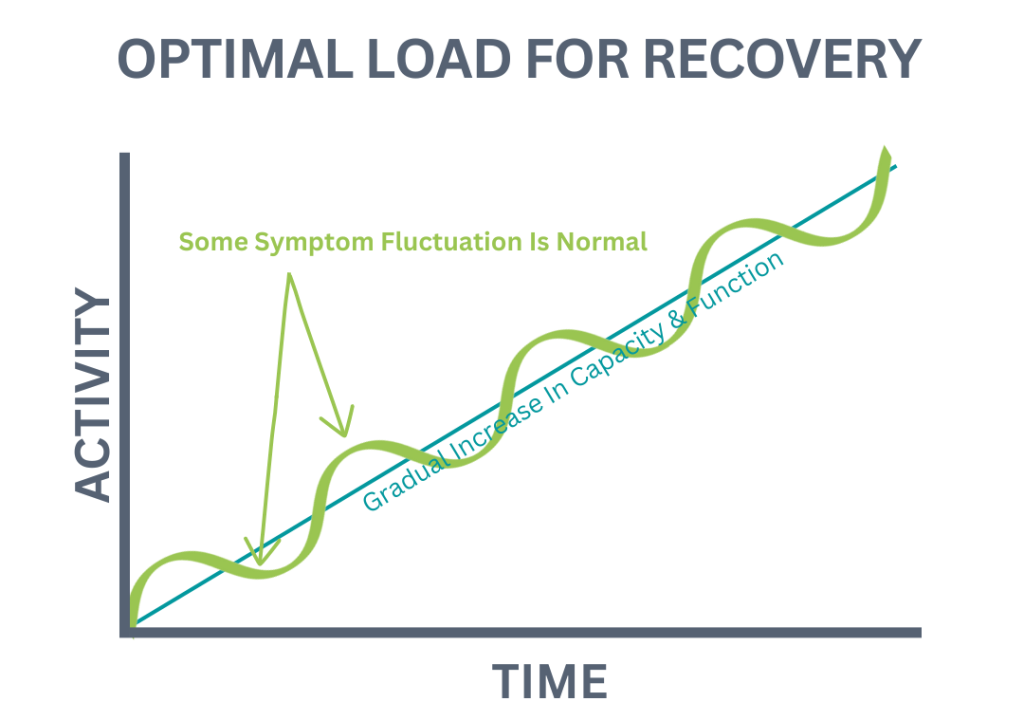
Sprains, strains & tendinopathies are common injuries seen by physios. One of the most frequently asked questions by clients is “Should I rest it, or keep it moving?”. While each case is different, using the principle of load management helps us guide our clients on how to balance rest versus movement.
Most Soft Tissue Injuries Do Not Need Complete Rest
Complete rest is not required for the vast majority of soft tissue injuries. In fact, research shows that for most injuries complete rest leads to a poorer prognosis, longer recovery times, increased rehab costs, & more time out of activity & sport. But going too far the other way, & pushing through significant pain, is also harmful & detrimental to recovery. Why is this so? And how much activity, or load, is just right?
A Short Disclaimer: This post provides general information that is applicable for most soft tissue injuries. However, if you are unsure if it is right for your injury then you should consult your health professional for a full assessment and treatment plan. There are some types of injury, such as ruptures, high-grade sprains, and post-operative rehab, that require different management plans. Potential bone involvement should also be excluded if in doubt. Please have an assessment with your health professional if you are unsure.
What Happens If You Rest Too Much After An Injury?

First lets look at what happens when someone rests, or “deloads”, too much or for too long. This is common when people are scared of what their pain means & are fearful of doing more damage, so they try to completely avoid any pain. The below diagram shows that over time, this leads to deconditioning. Because many tissues in our bodies respond to the load or stress being put through them, if we deload too much we reduce their strength. This reduces the strength of newly-forming scar tissue as well as muscles, ligaments, tendons & cartilage.
The weakening effect that deconditioning has on our tissues means that over time their capacity to take load becomes severely diminished. So when the person tries to return to activity or sport their pain comes on even earlier (leading to even more rest & deconditioning), & the risk of them sustaining another injury to other deconditioned tissues is increased.
What Happens If You Push Through Pain Too Much After An Injury?

The other end of the spectrum is people who try to push through too much pain. They go through a “boom & bust” cycle. They do too much & get a flare-up so they rest until they feel better, then push too hard again & cause another flare-up, then rest…
Each flare-up causes more tissue damage & therefore reduced capacity to take load, and then more rest leads to more deconditioning & reduced tissue capacity. This boom & bust cycle repeats until their tissue’s capacity to take load is severely diminished once again, leading to further injury.
SO HOW MUCH LOAD IS JUST RIGHT?
Research shows that putting the right amount of load through healing tissues promotes the formation of a strong scar, & retains as much strength as possible in other tissues. Stimulating a strong scar formation reduces the risk of repeating the same injury, plus maintaining the strength of other tissues reduces the risk of sustaining a different injury when returning to activity & sport.
Importantly, for almost all soft tissue injuries, working into a small amount of symptoms is fine provided they are then given adequate time for recovery. Research shows that using a “3 out of 10” rule is a good guide, where “0” is no pain & “10” is severe pain. We explain the 3/10 rule to clients in this way;
THE 3/10 RULE
1. Your pain shouldn’t go above 3/10 during activity or exercise
2. Your pain shouldn’t go above 3/10 when you cool down after activity or exercise
3. Your pain shouldn’t feel any worse than usual on the morning after your activity or exercise.

Understanding the 3/10 rule promotes client autonomy & self-management. It really helps them decide for themselves if they can push a bit harder or go for a bit longer, or if they have overdone it & need to adjust things next time. It helps pain-avoidant clients feel confident to work into the right level of symptoms, & makes over-doers more aware of avoiding the boom-bust cycle of flare-ups & rest.
Load management is a critical skill in the rehab of soft tissue injuries. As the graph shows, appropriate loading using the 3/10 rule, followed by adequate recovery time, progressively increases the tissue’s capacity & strength. This translates to an increased ability for us to do normal daily activity as well as get back into our favourite sport and exercise.
Balancing Activity And Rest After An Injury
So, to answer the question of “Do I rest after an injury or keep active?”, use the 3/10 rule to help work into the appropriate level of symptoms. Some discomfort, up to a 3/10 level, is generally fine provided adequate recovery time is given. We almost never prescribe complete rest for soft-tissue injuries, with the exceptions generally being complete ruptures, very high-grade sprains, or some post-operative rehab protocols. But on the other hand we also don’t have clients pushing into higher levels of pain, especially when they feel significantly worse the morning after a session.

